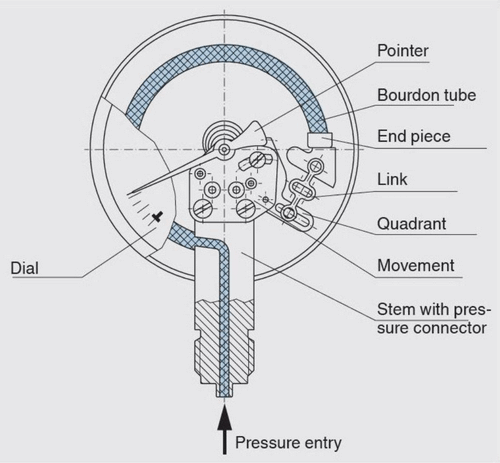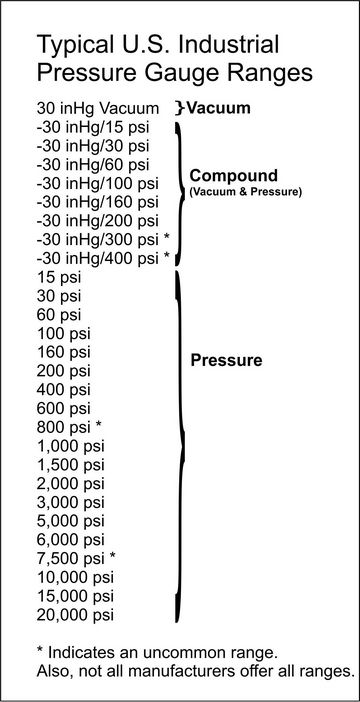Your shopping cart is currently empty.
Bourdon Tube Gauge Details
Bourdon Tube - Measuring Pressure
Bourdon tube measuring element is made of a thin-walled C-shape tube or spirally wound helical or coiled tube. When pressure is applied to the measuring system through the pressure port (socket), the pressure causes the bourdon tube to straighten itself, causing the tip to move. The motion of the tip is transmitted via the link to the movement which converts the linear motion of the bourdon tube to a rotational motion. That motion causes the pointer to indicate the measured pressure.
ASME B40.1 Pressure Gauge
The allowed deviation from true can be as much as the designated “percentage of full scale value” of the pressure gauge. Therefore a Grade 1A gauge with a range of 0-100 PSI will be within 1% of 100 PSI or +/- 1 PSI anywhere on the scale. If the gauge reads 34, you can only be sure that the pressure is between 33 and 35 PSI inclusive.A designation of “X%-Y%-X%” splits the dial into four quadrants. X% of full scale applies to the first and last 1/4 of the scale while Y% of full scale applies to the middle two quadrants or middle half of the scale. A 100 psi gauge with a Grade B rating of 3%-2%-3% will be accurate within 2 psi between 25 and 75 psi but within 3 psi from 0-25 psi and 75-100 psi.
ASME B40.1 Pressure Gauge Accuracy Grades:
Grade B: 3%-2%-3% FSGrade A: 2%-1%-2% FS
Grade 1A: 1.0% FS
Grade 2A: 0.50% FS
Grade 3A: 0.25% FS
Grade 4A: 0.10% FS.
Note that pressure gauge accuracy is always measured as a percent of “Full Scale” not a percent of READING. So the percentage is always based on the full pressure range of the gauge and the calculated allowable deviation applies anywhere on the scale.
Wetted Parts
“Wetted Parts” refers to the parts of an item that are exposed to the media in question. For a Bourdon tube pressure gauge it refers to those parts that are touched by the media being measured. From the diagram at the left you can see that the Bourdon “tube”, “socket” and the end piece or “tip” are touched or “wetted” by the media you are measuring and must be chemically compatible with that media. The dial, case, movement etc., are not “wetted parts” and need only be compatible with the environment.If you see “316SS TTS” it means that the Tube, Tip, & Socket (the “wetted parts) are 316 stainless steel.

Typical U.S. Utility Pressure Gauge Ranges

Typical U.S. Industrial Pressure Gauge Ranges

